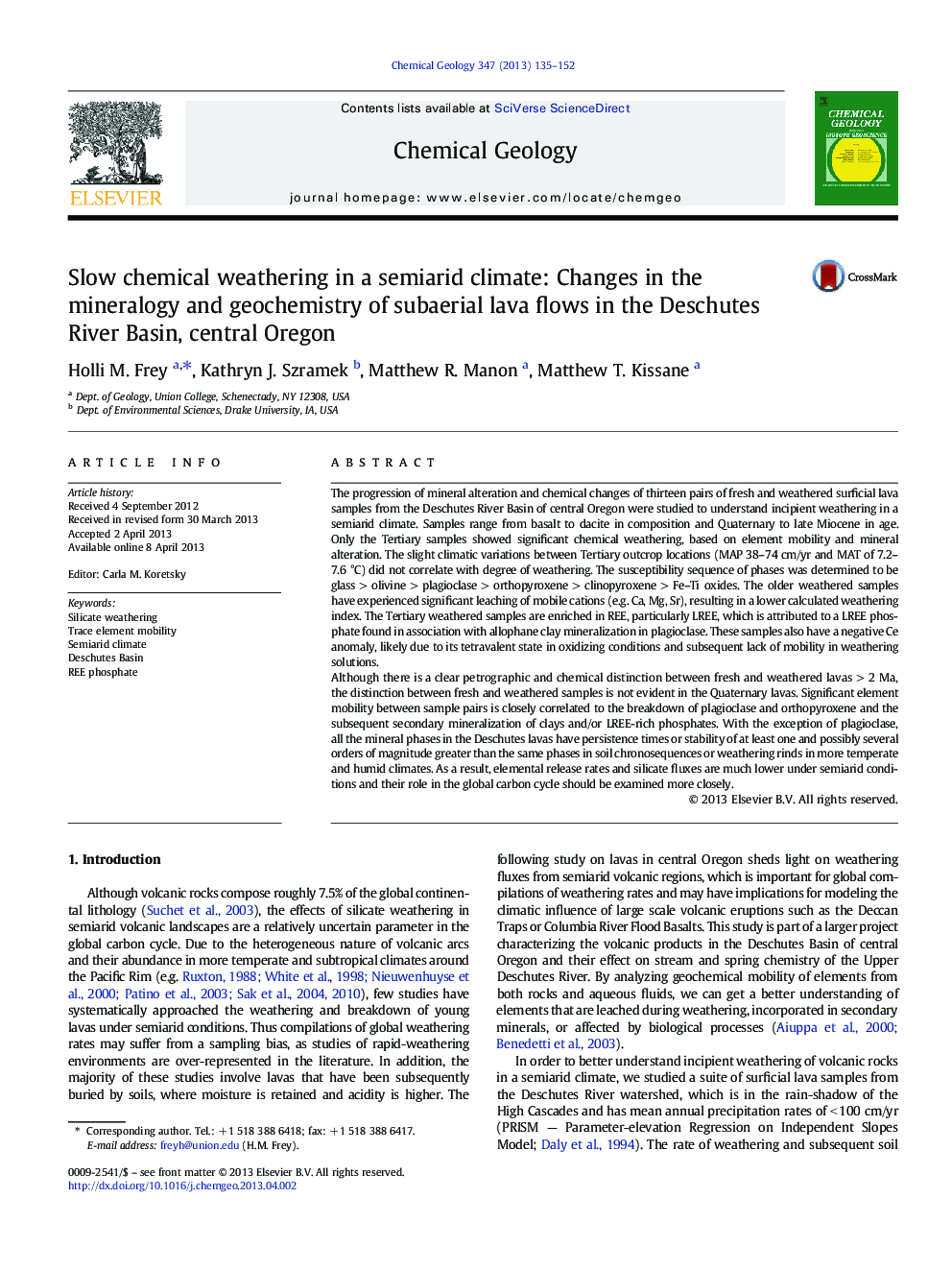| Article ID | Journal | Published Year | Pages | File Type |
|---|---|---|---|---|
| 6436961 | Chemical Geology | 2013 | 18 Pages |
â¢Weathering rates in semiarid conditions in the Deschutes Basin are inhibited.â¢The breakdown of plagioclase and orthopyroxene contributes to elemental mobility.â¢There is enrichment of many trace and REE in weathered samples > 2 Ma.â¢Secondary mineralization of a LREE phosphate forms with allophane after plagioclase.â¢Mineral dissolution rates are at least one order of magnitude slower than those reported previously.
The progression of mineral alteration and chemical changes of thirteen pairs of fresh and weathered surficial lava samples from the Deschutes River Basin of central Oregon were studied to understand incipient weathering in a semiarid climate. Samples range from basalt to dacite in composition and Quaternary to late Miocene in age. Only the Tertiary samples showed significant chemical weathering, based on element mobility and mineral alteration. The slight climatic variations between Tertiary outcrop locations (MAP 38-74 cm/yr and MAT of 7.2-7.6 °C) did not correlate with degree of weathering. The susceptibility sequence of phases was determined to be glass > olivine > plagioclase > orthopyroxene > clinopyroxene > Fe-Ti oxides. The older weathered samples have experienced significant leaching of mobile cations (e.g. Ca, Mg, Sr), resulting in a lower calculated weathering index. The Tertiary weathered samples are enriched in REE, particularly LREE, which is attributed to a LREE phosphate found in association with allophane clay mineralization in plagioclase. These samples also have a negative Ce anomaly, likely due to its tetravalent state in oxidizing conditions and subsequent lack of mobility in weathering solutions.Although there is a clear petrographic and chemical distinction between fresh and weathered lavas > 2 Ma, the distinction between fresh and weathered samples is not evident in the Quaternary lavas. Significant element mobility between sample pairs is closely correlated to the breakdown of plagioclase and orthopyroxene and the subsequent secondary mineralization of clays and/or LREE-rich phosphates. With the exception of plagioclase, all the mineral phases in the Deschutes lavas have persistence times or stability of at least one and possibly several orders of magnitude greater than the same phases in soil chronosequences or weathering rinds in more temperate and humid climates. As a result, elemental release rates and silicate fluxes are much lower under semiarid conditions and their role in the global carbon cycle should be examined more closely.
